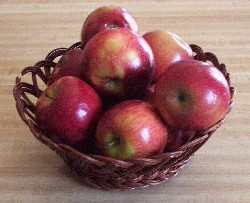How to Control Fruit Flies

About Fruit Flies
You’ve likely landed on this page because fruit flies have invaded your home. These tiny pests hitch a ride on the fruits you bring into your kitchen. They multiply quickly as they fly from one piece of fruit to another in your fruit bowl and spoil them. They multiply quickly. The fruit fly life cycle is just 40 to 50 days. During this time the female can produce 500 eggs. They are a common pest indoors. And they common outdoors, where they are less of a nuisance. So, let’s explore how to control fruit flies.
In the summer and early fall, fruit flies appear in great numbers. They do so when ripe and sometimes overripe fruits and vegetables are plentiful in kitchen fruit bowls.
Drosophila melanogaster
Did You Know? They are frequently used in genetic research because of their short life cycle.
Fruit Fly Identification
These tiny fruit flies are about 1/8 inch long. Their body color is yellow or tan. They have bright red eyes.
They are most noticeable in and around fruits, tomatoes, and other vegetables left in the kitchen. It’s no surprise, as these fruits and vegetables are their perfect meal. And, you are feeding them! They are also found in drains, and especially in garbage cans that do not have a tight lid.
They also take up residence in your houseplant’s dead and decaying leaves and branches, In addition, other flies and gnats may find a cozy nest in your houseplants. flies. So, make certain to keep houseplants well-tended.
Fruit Fly Life Cycle
The life cycle of these flies is very short. After emerging from the eggs, the larva stage lasts 5-6 days. Then, the adult fly stage lasts for 10 days. Mating pairs are very active. The female lays 30 to 50 eggs per day throughout her short adult life. She lays eggs in decaying organic matter, starting the next cycle. Hence, the bowl of fruit on your kitchen countertop is the perfect nesting place for them.
How to Control Fruit Flies
These pesky little bugs can be present at any time of the year. However, you will only find them when fruit or vegetables are present on your kitchen counters. The larva can only survive in decaying organic matter.
- First, remove the things they are looking for.
- Remove fruits and vegetables from counters and tables. Wrap them securely in plastic bags or put them in the refrigerator.
- Use garbage barrels with tight lids. Empty the garbage frequently.
- Keep drains clean.
- As discussed above, remove any ed and decaying houseplant leaves and branches.
- Use an easy-to-make homemade trap or buy one from the store. See below for how to make your own fruit fly trap.
Homemade Organic Traps
You can save money by making your own homemade trap. It’s a cinch.
Take a small bowl and put a few ounces of apple cider vinegar in it.
Put a few drops of liquid dish detergent in the cider vinegar.
Leave the bowl on a counter where the fruit flies are present.
Dispose of liquid and put fresh ingredients in every few days.
Related Articles
Also, people who read this article about fruit fly control will like:
Garden Insect Pests – Countless varieties of insects are hungry for your garden fruits and vegetables.
We hope you liked this article on fruit fly control. So, please tell your friends about us.
Please support our site. Shop for:
- rmmatthews100@hotmail.com
- 585-721-6528
- Rochester, NY
©1999-2024 GardenersNet.Com, All Rights Reserved

